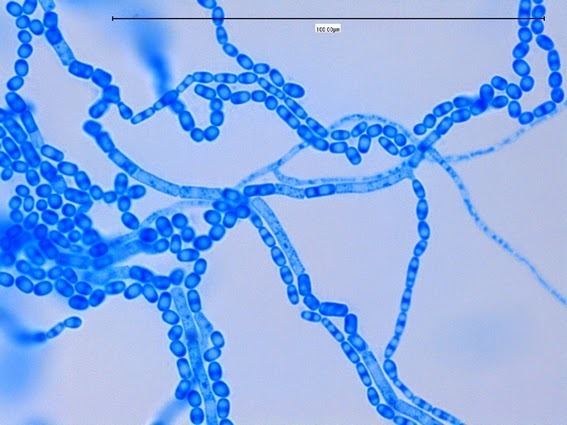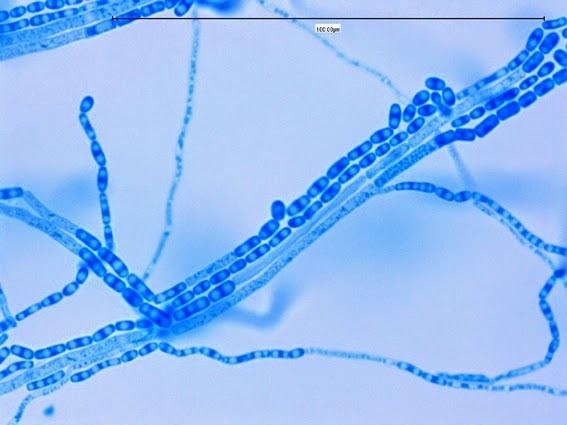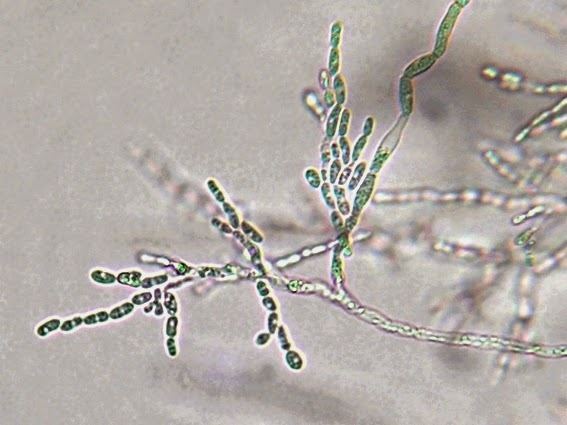Kingdom Fungi Scientific name Trichosporon | Division Basidiomycota Family Trichosporonaceae Higher classification Trichosporonaceae | |
 | ||
Similar Trichosporon beigelii, Rhodotorula, Cryptococcus, Geotrichum, Candida tropicalis | ||
Trichosporon beigelii
Trichosporon is a genus of anamorphic fungi in the family Trichosporonaceae. All species of Trichosporon are yeasts with no known teleomorphs (sexual states). Most are typically isolated from soil, but several species occur as a natural part of the skin microbiota of humans and other animals. Proliferation of Trichosporon yeasts in the hair can lead to an unpleasant but non-serious condition known as white piedra. Trichosporon species can also cause severe opportunistic infections (trichosporonosis) in immunocompromised individuals.
Contents
- Trichosporon beigelii
- Medical vocabulary what does trichosporon mean
- Taxonomy
- Description and habitat
- Human pathogens
- References

Medical vocabulary what does trichosporon mean
Taxonomy

The genus was first described by the German dermatologist Gustav Behrend in 1890, based on yeasts isolated from the hairs of a moustache where they were causing the condition known as "white piedra". Behrend called his new species T. ovoides, but subsequently Pleurococcus beigelii (later recombined as Trichosporon beigelii) was considered to be an earlier name for the same species and was accepted as the type of the genus Trichosporon.

Over 100 additional yeast species were referred to Trichosporon by later authors. With the advent of DNA sequencing, however, it became clear that many of these additional species belonged in other genera. Based on cladistic analysis of DNA sequences, just under 40 species are now accepted in the genus.

DNA sequencing has also shown that white piedra can be caused by more than one Trichoporon species. As a result, Trichosporon beigelii has become a name of uncertain application. McPartland & Goff selected a neotype strain that makes T. beigelii synonymous with Trichosporon cutaneum. Guého and others, however, have argued that T. beigelii should be discarded (as a dubious name) and Behrend's original T. ovoides (for which a neotype strain has also been selected) should become the type. As a result of this uncertainty, the name T. beigelii is now obsolete.
Description and habitat
Trichosporon species are distinguished microscopically by having yeast cells that germinate to produce hyaline hyphae that disarticulate at the septa, the hyphal compartments acting as arthroconidia (asexual propagules). No teleomorphic (sexual) states are known.
Species are widespread and have been isolated from a wide range of substrates, including human hair (Trichosporon ovoides), soil (T. guehoae), cabbages (T. brassicae), cheese (T. caseorum), scarab beetles (T. scarabaeorum), parrot droppings (T. coremiiforme), and sea water (T. dermatis).
Human pathogens
Several Trichosporon species occur naturally as part of the microbiota of human skin. Occasionally, particularly in circumstances of high humidity, the fungus can proliferate, causing an unpleasant but harmless hair condition known as white piedra. Soft, pale nodules containing yeast cells and arthroconidia form on hairs of the scalp and body. The species responsible include Trichosporon ovoides, T. inkin, T. asahii, T. mucoides, T. asteroides, and T. cutaneum. The obsolete name T. beigelii was formerly applied to all or any of these species.
Much more serious opportunistic infections, collectively called trichosporonosis, have been reported in immunocompromised individuals. Species said to be agents of trichosporonosis are T. asahii, T. asteroides, T. cutaneum, T.dermatis, T. dohaense, T. inkin, T. loubieri, T. mucoides, and T. ovoides.
